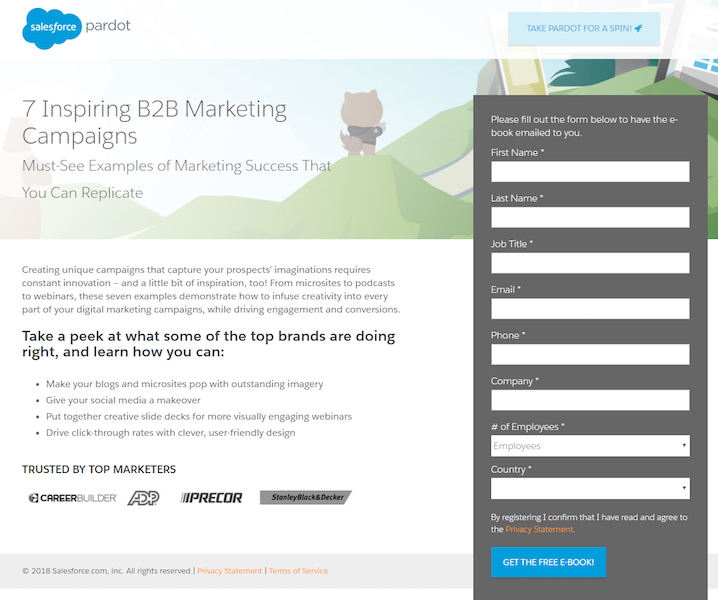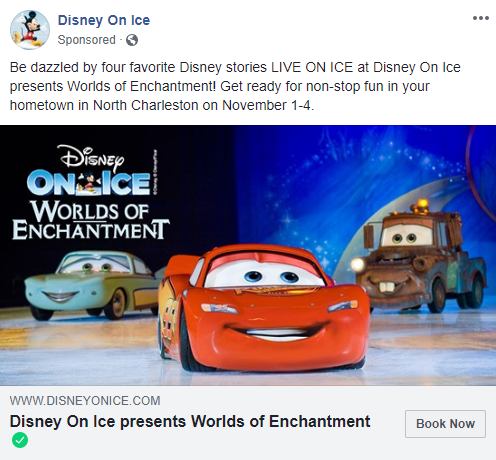A single marketing campaign isn’t likely to appeal to everyone. What interests a single, 18-year-old college freshman will be utterly different from what attracts a 45-year-old attorney who’s married with children.
Understanding these similarities and differences allows you to isolate the market into individual categories and create specific selling points accordingly. This makes your campaigns more precise because you can focus solely on serving smaller, more refined segments.
Of the four main types of marketing segmentation, today’s article focuses on demographic segmentation.
What is demographic segmentation?
Demographic segmentation divides the market into smaller categories based on demographic factors, such as age, gender, and income. Instead of reaching an entire market, a brand uses this method to focus resources into a defined group within that market.
Dividing the market into smaller segments, each with a common variable, allows companies to use their time and resources more efficiently. They can better understand the prospective market, and use advertising personalization to ensure the needs of the targeted group are fulfilled:

This customer segmentation method is one of the most commonly used because it’s easy to acquire through census data, analytics software, consumer insights, and more. It’s also considered by many businesses to be the cheapest way to divide a target market.
Why is demographic segmentation in marketing so important?
Companies reduce the risk of running campaigns to uninterested consumers, which quickly increases ROI. In fact, email marketers have witnessed a 760% increase in revenue by segmenting their email campaigns. Conversely, 85% of new product launches in the US fail to generate desired revenue due to poor segmentation.
In addition to better ROI, demographic segmentation allows you to:
Build long-lasting customer relationships
Reaching your customers on a more human level with demographic-based personalized marketing creates deeper customer loyalty. It allows them to identify with your brand and feel like you are an advocate for their needs, which makes them more likely to do business with you over longer periods.
Improve your products and services
Having loyal customer relationships encourages you to look at your products and services in a new way. When you have a deeper understanding of your target audience, you can put yourself in their shoes to better serve them. If you develop fitness programs and know that a majority of your clients prefer the same type of program to be released, you’re more likely to make that happen.
Optimize your marketing strategies
Demographic segmentation allows you to get more specific with your marketing strategies. It helps clarify your vision, have more direction with future advertising plans, and optimize your resources, time, and budget. If 85% of your clients range from 20-35 years old, this is the segment you’re going to target. Spending your time and money on seniors would be a waste.
Demographic segmentation variables
1. Age
Age is the most basic variable of them all, albeit the most important because consumer preferences continually change with age. Almost all marketing campaigns target age-specific audiences.
This variable can be viewed regarding specific age ranges or life cycle stages: babies, children, adolescents, adults, middle-age, and seniors. For example, many famous fashion designers have different collections to target other age groups. They aim certain clothing lines at specific age ranges, such as a chic fashion line at younger prospects and a more formal and elegant line at older individuals.
Age segmentation is also generation-based: baby boomers, gen X, millennials, etc. Since members within each of these individual groups were born around the same time and grew up with similar experiences, they often share similar characteristics and thought processes. Targeting baby boomers and gen X with the same offer and marketing strategy is likely to produce undesirable results because they think and act differently.
Not only do age groups and generations differ in their buying habits, but also in how they respond to advertising. They tend to have distinct ways of speaking and often spend their time on separate platforms. For example, millennials may spend most of their time on Instagram and Facebook, while seniors prefer their email inboxes.
Here’s an Instagram ad that is both age- and generation-targeted, since many millennials in their 20s and 30s use the “Wife, mom, boss” phrase:

In addition to age segmentation, Brooklyn & Barnes presumably uses gender, occupation, and family segmentation (more on these below).
2. Gender
Men and women generally have different likes, dislikes, needs, and thought processes. For instance, few men apply makeup, and most women don’t wear boxers. Also, women typically do most of the household grocery shopping and are more likely than men to donate to charitable causes. These are all key factors to consider when creating a campaign.
Shein has the right idea with their Facebook ad:

They created this ad specifically for women (hence the women’s swimsuits and the “for women” in the description). They purposely targeted them on Facebook for the most engagement and click-throughs.
Be careful not to assume gender stereotypes, such as considering pink a feminine color and blue a masculine color. Advertising with gender stereotypes like this could easily make your brand look sexist and cause you to miss out on or anger your target audience.
3. Income and occupation
If people can’t afford your product or service, there is no point in targeting them. After all, you wouldn’t promote a Mercedes or Ferrari to someone who can’t afford a used vehicle with more than 100,000 miles.
Income targeting lets you measure the buying power of your audience. When you know the income range of consumers, you can usually find data to support how people spend money on both the higher and lower end of the spectrum. Many companies use this data to sell different tiers of the same product, based on income level. For instance, airlines have three classes: economy, business class, and first-class.
Occupation targeting is also important since certain resources are aimed at different industries and job titles. Take this Pardot ebook display ad, for example:

When prospects click the ad, they go to a dedicated post-click landing page to download the ebook:

Job titles are especially necessary with an account-based advertising campaign. In comparison to traditional demand gen, account-based marketing is often described as a flipped funnel approach because it inverts the process. Rather than targeting individual leads, it targets the account level. The intent is to reach highly-relevant accounts with the most revenue potential, so knowing occupation is integral.
4. Ethnicity and religion
With the tremendous increase in international business and global advertising brings an increase in segmentation based on ethnicity, race, nationality, and religion. These groups have many individual cultures that come with conflicting interests, preferences, attitudes, and beliefs. This could impact both their response to marketing and their buying habits.
Consider Coca-Cola and Pepsi. Both companies advertise globally, but localize their campaigns for each country, too. The messages are entirely different, based on local customs, religions, nationality, etc.
5. Family structure
Family makeup can be instrumental in segmentation because when a family’s dynamic changes, its needs and desires often do too. This strongly affects their buying habits and your sales process.
Single individuals tend to prioritize themselves, while newly married couples are likely prioritizing each other and their homes. Couples with several children have different needs than those who just had their first child. Large families might be more interested in low-cost household products, as compared to a couple with the same income, but without any children.
This Facebook ad presumably targets individuals who have families with small children:

Note: It also targets by geographical location, as seen in the description. Combining various types of marketing segmentation creates even more powerful, ROI-producing campaigns.
Get personal with your campaigns
You can’t please all consumers, but you can divide the larger market into unique demographic segments and then cater to each one’s needs individually.
For more on how to personalize and make the most out of your post-click marketing efforts, sign up for an Instapage demo here.
